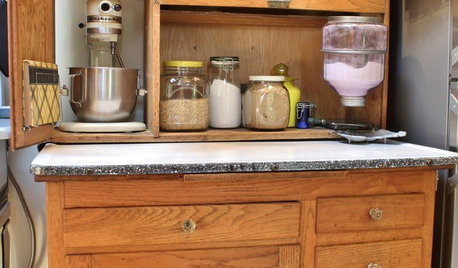Russian Pickled Vegetables -- Know anything about this?
denninmi
16 years ago
Related Stories

WORKING WITH PROSWhat Do Landscape Architects Do?
There are many misconceptions about what landscape architects do. Learn what they bring to a project
Full Story
LIGHTINGWhat to Know About Switching to LED Lightbulbs
If you’ve been thinking about changing over to LEDs but aren't sure how to do it and which to buy, this story is for you
Full Story
MOST POPULAR19 Kitchen Projects Every Homeowner Should Know About
Could your kitchen use a new sink, a backsplash, updated hardware, better organization, a good cleaning? Here's how to get started
Full Story
GARDENING FOR BIRDSWhat to Know About Birds Nesting in Your Yard
Learn how to observe, record data and help ornithologists with NestWatch’s citizen science project understand bird trends
Full Story
ANTIQUESMust-Know Furniture: The Hoosier Cabinet
This freestanding cabinet handled all the kitchen bustle in the early 20th century, earning it the motto ‘Hoosier saves steps’
Full Story
GARDENING GUIDES13 North American Backyard Birds to Know
Find out about these enchanting native species and learn how to attract them to your yard
Full Story
GREEN BUILDINGHouzz Tour: Pickle Factory Now an Energy-Wise Live-Work Space
A charming but poorly insulated 1880s Philadelphia commercial building becomes a spacious energy-efficient home and studio
Full Story
KITCHEN DESIGNHouzz Call: Tell Us About Your First Kitchen
Great or godforsaken? Ragtag or refined? We want to hear about your younger self’s cooking space
Full Story
PETSSo You're Thinking About Getting a Dog
Prepare yourself for the realities of training, cost and the impact that lovable pooch might have on your house
Full Story
FARM YOUR YARD6 Things to Know Before You Start Growing Your Own Food
It takes time and practice, but growing edibles in the suburbs or city is possible with smart prep and patience
Full Story





rachelellen
readinglady
Related Professionals
Glen Ellyn Landscape Architects & Landscape Designers · Woodinville Landscape Architects & Landscape Designers · Norwood Landscape Contractors · Salem Landscape Contractors · Springfield Landscape Contractors · Biloxi Landscape Contractors · Chesapeake Ranch Estates Landscape Contractors · Hilton Head Island Landscape Contractors · Lexington Landscape Contractors · Paterson Landscape Contractors · South Lyon Landscape Contractors · Wells Landscape Contractors · Palos Heights Landscape Contractors · Danbury Roofing & Gutters · Aurora Driveway Installation & Maintenanceksrogers
love2troll
bejay9_10
RainaKelts